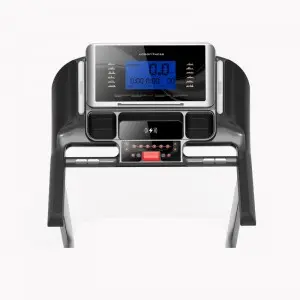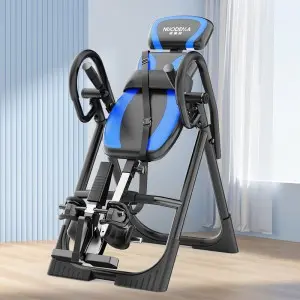Treadmills and handstand machines, as common equipment, if not operated properly, will not only reduce the exercise effect but also may cause sports injuries. Many users, due to a lack of understanding of the equipment’s principles, have misunderstandings in aspects such as speed adjustment and posture control. This article will break down these common mistakes and provide correction methods in combination with the principles of sports science to help users use the equipment safely and efficiently.
Treadmill: Avoid the hidden traps of speed and posture
Speed adjustment: Blindly pursuing “fast” rather than “stable”
Common mistake: When beginners use a treadmill, they often rush to increase the training intensity and quickly set the speed above 8km/h, which leads to leaning forward, staggering steps, and even falling due to not being able to keep up with the rhythm. Some people are still accustomed to starting at a “sprint speed”, neglecting the body’s warm-up and adaptation process, which increases the risk of joint wear and tear.
Correction method: The speed adjustment should follow the principle of “gradual increase”. During the warm-up stage (the first 5 minutes), activate the muscles by walking at a speed of 4-5km/h. During formal training, choose a jogging speed of 6-7km/h based on your own ability and keep your breathing steady (being able to talk normally is the standard). If you need to increase the intensity, do not increase the speed by more than 0.5km/h each time. Adjust after 3 to 5 minutes of adaptation. Research in sports physiology shows that a uniform and controllable speed can burn fat more effectively while reducing the impact force on the knee joints.
Posture control: Hunched back and excessive stride
Common mistake: Looking down at the dashboard with the chest hunched while running can cause tension in the back muscles. When the stride is too long, a strong impact force is generated when the heel touches the ground, which is transmitted to the knees and hip joints. Excessive swinging of the arms or being too tense and still disrupts the body’s balance.
Correction method: Maintain a “neutral position” posture – keep your head straight, look straight ahead, relax your shoulders naturally, and tighten your core muscles to stabilize your trunk. Keep your stride at 45% to 50% of your height (about 60 to 80 centimeters). Land on the middle of your feet first and then push off with your toes to use your leg muscles to cushion the impact force. Bend your arms at 90 degrees and swing them naturally with your body, with the amplitude not exceeding the midline of your body. This posture conforms to human biomechanics, can disperse joint pressure and enhance running efficiency.
Handstand machine: Scientific control of Angle and force application
Handstand Angle: Blindly challenging “full handstand”
Common mistake: When using a handstand machine for the first time, one is too eager to try a 90° vertical handstand, neglecting the adaptability of the neck and spine. Some users believe that the larger the Angle, the better the effect, which leads to excessive cerebral congestion and symptoms such as dizziness and nausea. Some people started doing handstands when the Angle was not locked, and the sudden tilt of the equipment caused panic.
Correction method: The handstand Angle should be adjusted according to the body’s tolerance level. Beginners should start at 30° (where the body forms a 60° Angle with the ground), maintaining this Angle for 1-2 minutes each time. Increase the Angle by 5° to 10° each week and gradually adapt to 60° to 70° (this Angle is already sufficient to meet the needs of spinal traction). After adjusting the Angle, be sure to confirm that the locking device makes a “click” sound and gently push the equipment with your hand to test its stability. Sports medicine points out that handstands over 75 degrees offer no additional benefits to ordinary people; instead, they increase the burden on the cardiovascular system.
Force application and protection: Relying on the arm for support and neglecting fixation
Common mistake: During the handstand, both hands grip the handrails forcefully, placing the body weight on the arms, which leads to shoulder strain. If the seat belt is not worn or is loose, it will lose support when the body shakes. After a handstand, a quick return to the original position causes blood to flow back instantly, leading to discomfort in the brain.
Correction method: Before starting, fasten the safety belt around your waist and abdomen. The tightness should be such that one finger can be inserted, ensuring that your body is in close contact with the equipment. When doing a handstand, maintain body stability by exerting force through the core muscles. Gently support the handrails with both hands only for balance assistance and avoid bearing weight. When descending, activate the device’s slow descent function (if this function is not available, you need assistance from someone else to slowly reset). After returning to the starting position, sit still for 30 seconds until your blood circulation stabilizes before getting up. This operation conforms to the principles of spinal mechanics and can reduce the stimulation of blood vessels caused by changes in body position.
Common misconception: Cognitive bias in equipment usage
Ignore warming up and cooling down
Common mistakes: Standing directly on the treadmill to start running or lying on the handstand machine to start doing handstands, skipping the warm-up session. Stop the machine and leave immediately after exercising, neglecting muscle relaxation.
Correction method: Perform 5 to 10 minutes of dynamic warm-up before use – treadmill users can do high leg raises and lunges. Inverted machine users need to move their necks (slowly turning left and right) and waists (gently twisting) to activate the core muscle groups. Static stretching after exercise: Focus on the calves on the treadmill (wall lunge stretch) and the front of the thighs (standing foot lift). The key points of the handstand machine are to relax the shoulders and back (expand the chest and stretch) and the neck (sit and tuck in the chin). Each movement should be held for 20 to 30 seconds. Warming up can enhance muscle elasticity, and cooling down is the key to reducing lactic acid accumulation.
Overtraining: Loss of control over frequency and duration
Common mistakes: Using a treadmill for more than one hour every day or doing handstands for several consecutive days can lead to muscle fatigue and a weakened immune system.
Correction method: Control the frequency of treadmill training to 3 to 4 times a week, with each session lasting 30 to 45 minutes (including warm-up and cooling). Use the handstand machine 2 to 3 times a week, with each session not exceeding 5 minutes (cumulative duration). When the body sends out “signals”, it is necessary to pause – for instance, if joint pain occurs on the treadmill or headache persists for more than 10 minutes after a handstand, one should rest for 1-2 days before resuming training. Exercise follows the principle of “excessive recovery”. Only with moderate rest can the body recover and become stronger.
Mastering the correct operation of treadmills and handstands hinges on understanding the logic that “equipment serves the body” – parameters such as speed and Angle should be adapted to one’s own ability rather than blindly imitating others. After correcting incorrect operations, not only can the training efficiency be improved, but also the risk of sports injuries can be reduced by more than 80%, making fitness truly a booster for health.
Post time: Jul-09-2025



